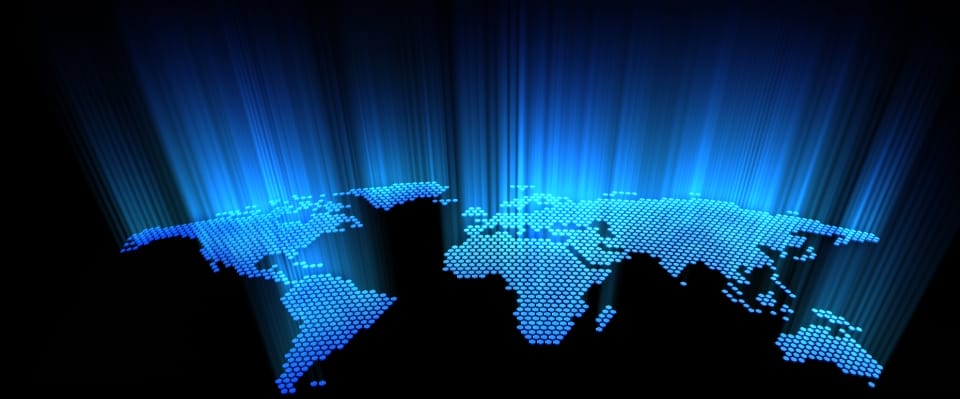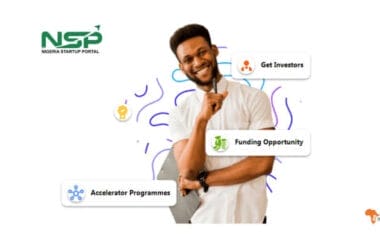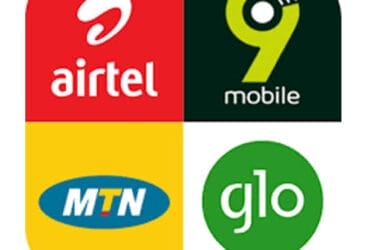The internet in such a short time has become the most pervasive communication system in the world. Digital statistics show that whilst it took Radio 38 years and TV 13 years to individually reach 50 million users; it took the Internet only 4 years. Even though the world is increasingly interconnected through mobile, high-speed communications, two thirds of the world’s population have yet to gain access to the Internet (UN Millennium Goals, 2012 Update Report). Also not debatable is the economic and social impact of the internet. A study by the World Bank revealed that a 10% increase in broadband penetration can boost the GDP growth of low- and middle-income developing countries by 1.38% — more than any other telecommunication service.
[pull_quote_right]It took Radio 38 years and TV 13 years to individually reach 50 million users; it took the Internet only 4 years.[/pull_quote_right]Over the last 20 years, the Internet and the Web have transformed our lives. Looking forward, we are seeing even more exciting digital developments that will provide more benefits to more people in more places. Some of the unprecedented opportunities that broadband connectivity presents include:
- Citizen – get information/work done anywhere and anytime, also having newer ways for communicating, contributing, acting, and learning.
- Businesses – News ways to serve clients and new competitive advantages, new ways to be more productive
- Innovators – New market segments, geographies, business opportunities, and competitiveness regardless of size
- Government – News ways to serve citizens and businesses, address core societal issues (Education, Healthcare, Environment etcetera), and provide Infrastructure for innovation/research leading to creation of more jobs (SMEs)
The internet has become so central to our existence in this age that the UN, defined access to the Internet as now among one of global citizens’ most basic rights. The European Commission’s Digital Agenda goes one step further by similarly highlighting broadband access as a basic right. Invariably connectivity (interchangeably here Spectrum) is essential in the same sense as oxygen: invisible and unnoticed, until you don’t have it (and by then you are dead).
[pull_quote_left]The International Telecommunications Union (ITU) estimates that for over 3.9 billion people, around 61% of the world’s population, the price of fixed broadband is unaffordable.[/pull_quote_left]It is therefore sad that today most of the world’s population is unconnected. The International Telecommunications Union (ITU) estimates that for over 3.9 billion people, around 61% of the world’s population, the price of fixed broadband is unaffordable. By continent this ranges from 8% of the population of Europe, to 90% of the population of Africa. Likewise, basic mobile broadband is unaffordable for over 2.6 billion of the world’s population. On the flip side the need for persistent connectivity is fueling innovation and consequentially proliferation of devices – it is expected that by 2020 there will be more than 100 billion connected intelligent devices globally. And of course the vast majority of this connection is relying on wireless technologies and the currency of the wireless industry is Spectrum; literally the oxygen of the digital world.Spectrum describes the range of frequencies, which wireless devices can use to transmit and receive information. In order to manage access to spectrum, regulators allocate different bands of frequencies for different uses and establish technical rules to minimize the likelihood of harmful interference. Some bands of spectrum are licensed for the exclusive use of certain entities and specified purposes. These include uses as varied as military and public safety purposes as well as commercial applications such as radio, television and broadband Internet. Other bands are set aside for shared use on an unlicensed or license-exempt basis. Common uses of unlicensed or license-exempt spectrum today are Wi-Fi networks and Bluetooth devices.[pull_quote_right]Spectrum describes the range of frequencies, which wireless devices can use to transmit and receive information. [/pull_quote_right]
It is relevant to note that historically, spectrum was managed by assigning exclusive rights to use a specific frequency in a specific location. Initially, these authorizations were granted to governmental and commercial users at no cost. Since last two decades however, long term commercial licenses have generally been assigned through competitive auctions. Winning bidders typically receive spectrum access in the form of exclusive assignments of frequencies to chosen services (i.e., licenses), ensuring that no other services infringe on that assignment (i.e., no interference). Obviously limited by technology signal interference were considered a major problem of spectrum which ultimately drove the way spectrum management were therefore conceptualize, create blocks of delineated bands that guarantees exclusive use and protection of licensees’ signals.
The problem however is that this traditional licensing model of spectrum bands has limited the amount of usable spectrum for wireless data communications, particularly as the demand for data, voice, and video traffic continues to explode on Internet enabled mobile devices. To obtain more spectrum for these applications, regulators around the world are considering proposals to assign more spectrum for exclusive use licensing. However, nearly all the RF spectrum is allocated for specific applications, making reallocation of exclusive use licenses extremely challenging and time consuming. In reality, large portions of the allocated spectrum are not actively used in space and time. To alleviate this disparity in spectrum use, researchers and policy makers have proposed the concept of Dynamic Spectrum Access (DSA), allowing devices to use unoccupied portions of spectrum without interfering with the licensee’s transmissions
Dynamic Spectrum Access (DSA) is an umbrella term used to describe a set of technologies and techniques enabling radio communications devices to opportunistically transmit on available radio spectrum. These technologies and techniques ensure that consumers and their devices have newhorizonacademy.net/female-viagra/ wireless bandwidth when and where they need it. We at Microsoft belief that the first globally-harmonized opportunity to use DSA technologies and techniques will be in the TV bands. Technologies exist today that can use TV band white spaces spectrum for a range of wireless applications, from broadband, to wireless offload, to machine-to-machine.
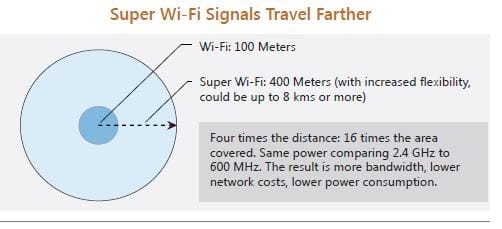 The term TV White Space spectrum refers to frequencies in the VHF and UHF television broadcast bands that are either unassigned or unused by existing broadcast or other licensees. Television broadcasts occupy designated channels in the VHF and UHF bands, with the assignment of channels to broadcasts varying by location. Not all the designated channels are in use for broadcast in any given market, giving rise to “White Spaces” in which a channel that is not used for broadcast may be available for other purposes.
The term TV White Space spectrum refers to frequencies in the VHF and UHF television broadcast bands that are either unassigned or unused by existing broadcast or other licensees. Television broadcasts occupy designated channels in the VHF and UHF bands, with the assignment of channels to broadcasts varying by location. Not all the designated channels are in use for broadcast in any given market, giving rise to “White Spaces” in which a channel that is not used for broadcast may be available for other purposes.
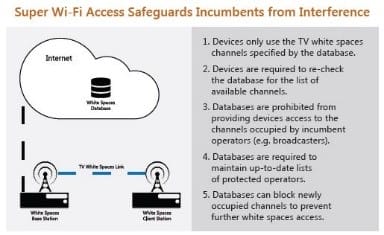 Unlocking the TV band and other unused white spaces spectrum will mean significantly increasing the total amount of bandwidth available for consumers and their devices – and thereby alleviating pressure on other spectrum bands. Based on the results of trials Microsoft has conducted in the U.S, Europe and Asia, we believe that TVWS technology will be able to deliver similar functionality and high speeds compared to other wireless broadband technologies.
Unlocking the TV band and other unused white spaces spectrum will mean significantly increasing the total amount of bandwidth available for consumers and their devices – and thereby alleviating pressure on other spectrum bands. Based on the results of trials Microsoft has conducted in the U.S, Europe and Asia, we believe that TVWS technology will be able to deliver similar functionality and high speeds compared to other wireless broadband technologies.
TVWS has couple of distinct advantages highlighted below:
- TVWS networks work in much the same way as conventional Wi-Fi, but the signals travel over longer distances than the typical Wi-Fi signal.
- Conventional Wi-Fi is relatively weak when it comes to working in typical physical settings – bumping up against concrete obstructions and many types of walls. TVWS can overcome these limits.
- Just as your TV signal passes through walls (and many of them), the wireless signal for your Internet connection will as well.
- Ability to achieve greater efficiencies. Covering a longer and wider range with approximately the – same power and computing requirements results in systems – that will deliver more bandwidth and more consumer benefits at lower network costs and lower power consumption.
Given these inherent distinct advantages, some specific scenario that TVWS easily lends itself to as a best in class solution include:
- Leveraging long range characteristics enables scenarios like Cellular offloading; Rural broadband/backhaul; Wide-coverage hotspots; Sensor network; Wireless surveillance system; etc.
- Whilst its obstacle penetration/avoidance characteristics enables Indoor video distribution; M2M –factory floor automation; Device to device network; etc.
For over 5 years, Microsoft has been working with industry and government partners around the world to demonstrate the viability and potential of Dynamic Spectrum and TV White Spaces. The viability of the technology has been proven in over a dozen trials and commercial deployments around the world – ranging from remote villages of Africa to the dense urban centers of Asia. As part of efforts to drive thought leadership in this space, Microsoft recently partnered with couple of other stakeholders to form the Dynamic Spectrum Alliance; a global, cross-industry alliance focused on increasing dynamic access to unused radio frequencies. DSA is advocating for laws and regulations that will lead to more efficient and effective spectrum utilization. Its membership spans multinationals, small- and medium-sized enterprises, and academic, research, and other organizations from around the world, all working to create innovative solutions that will increase the amount of available spectrum to the benefit of consumers and businesses alike. Specific goals of DSA includes:
- Closing the Digital Divide –supporting technical, regulatory, and business model innovations that can reduce the cost of deploying last-mile wireless networks and help to make wireless broadband access more affordable for people around the world.
- Enabling the Internet of Things – supporting spectrum policies that can enable the burgeoning Internet of Things – with potentially billions of interconnected wireless devices operating on our behalf – increasing efficiency and improving quality of life.
- Alleviating the “Spectrum Crunch” – The Dynamic Spectrum Alliance supports changing regulatory policies that create artificial spectrum scarcity and replace them with policies that will increase available bandwidth, reduce costs, and increase consumer choice.
In Nigeria we are at the fore-front of advocacy for the use of TVWS to help actualize the goals of the countries recently released well-articulated Broadband Policy Implementation Plan. Amongst other broad goals, the broadband plans has a target to deliver 80% mobile broadband penetration by 2018 and an open access shared infrastructure environment to support future growth. Microsoft is keen to with local partners participate in a TV band white spaces regulatory trials to explore large scale pilot that addresses scenarios of Education, eHealth, Rural Digital Inclusion, etc.
In conclusion,
TVWS will enable new business models making access more affordable and can improve education, healthcare, e-government, small business empowerment & social inclusion; for this to materialize policymakers should think differently about spectrum allocation and regulation. We support ongoing efforts to gain a better understanding of the viability and potential impact of TVWS in Nigeria by the Ministry of Communication Technology and the Federal Spectrum Management Council through ongoing discussions around regulatory trials and demonstration in the country. We further recommend that TVWS ultimately be made available for license-exempt (unlicensed) access on a harmonized basis, facilitated by the use of geo-location databases and other interference protection mechanisms to support the Nations objectives of enabling ubiquitous affordable broadband connectivity and services across Nigeria country to better position the country to compete in the information age.
As an Amazon Associate, TechCity may earn a small commission if you shop these products.


